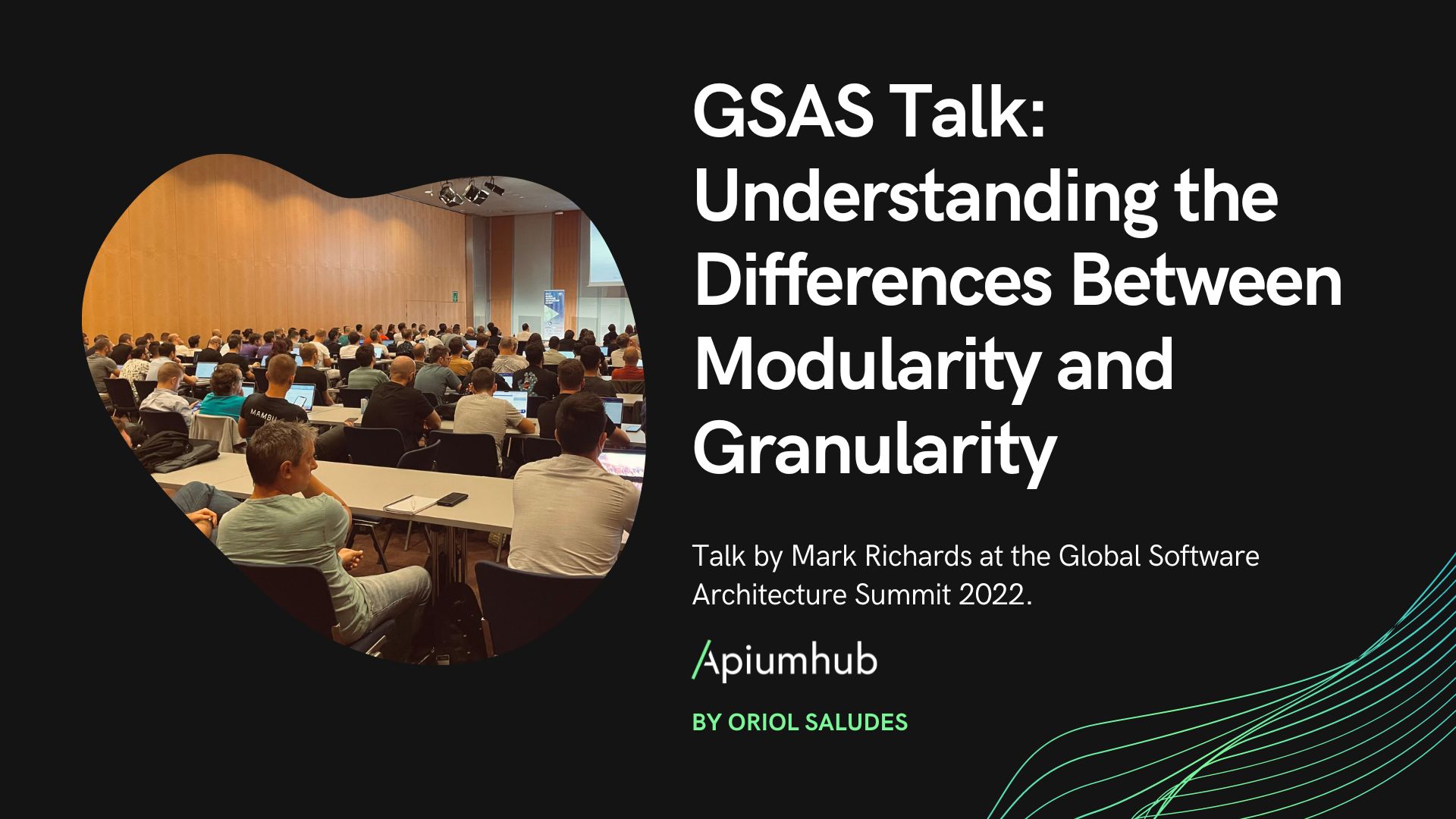Table of Contents
Software architecture has become an important part of every software project. When building a solid software architecture, you select the important parts of a systems, think how these parts fit together, and take crucial decisions in designing these systems. It is a foundation of any software development project. Actually you may find it interesting reading an article about software architecture benefits and importance, click here to read it.
There is a huge difference between a senior developer and a software architect. As an architect, it is required that you have more experience to be able to design an end to end solution.
In software architecture theory is as important as practice, therefore our team of software developers and architects prepared a list of best software architecture books to read this year! These software architecture books are really valuable in understanding and effectively applying software architecture principles on real software projects.
Top 20 software architecture books
1. Beyond Software Architecture: Creating and Sustaining Winning Solutions by Luke Hohmann
The first one of the list of best software architecture books is ” Beyond Software Architecture”. It is about business realities of creating software products. If you’re a software architect, or dream of being one, this is a must read book! It provides practical techniques that development executives can employ to improve the productivity of their software organization. The book is nicely segmented into logical chapters, making it an excellent reference. It covers classic architecture issues such as portability, usability, performance, layering, API design, and security, as well as other valuable material, for example, software architecture from business and product management side, which often get ignored, or left till late in the process. This book gives precious insights and lessons about creating winning software solutions in the context of a real-world business. Here you can find practical techniques that development executives can employ to improve the productivity of their software organization. It deals with issues like licensing, deployment, installation, configuration, support and many more!
2. Domain-Driven Design: Tackling Complexity in the Heart of Software by Eric Evans
Second one of the list of best software architecture books is DDD by Eric Evans. He has written a fantastic book on how you can make the design of your software match your mental model of the problem domain you are addressing. It is not about drawing pictures of a domain; it is about how you think of it, the language you use to talk about it, and how you organize your software to reflect your improving understanding of it. Eric thinks that learning about your problem domain is as likely to happen at the end of your project as at the beginning, and so refactoring is a big part of his technique. Eric Evans convincingly argues for the importance of domain modeling as the central focus of development and provides a solid framework and set of techniques for accomplishing it. This book offers readers a systematic approach to domain-driven design, presenting an extensive set of design best practices, experience-based techniques, and fundamental principles that facilitate the development of software projects facing complex domains. This book is great because it incorporates numerous examples based on actual projects to illustrate the application of domain-driven design to real-world software development. Readers learn how to use a domain model to make a complex development effort more focused and dynamic.
Third one on the list of software architecture books is “97 things every software architect should know”. In this truly unique technical book, today’s leading software architects present valuable principles on key development issues that go way beyond technology. More than four dozen architects, including Neal Ford, Michael Nygard, and Bill de Hora, offer advice for communicating with stakeholders, eliminating complexity, empowering developers, and many more practical lessons they’ve learned from years of experience. Among the 97 principles in this book, you’ll find useful advice such as: “Simplicity before generality, use before reuse” – Kevlin Henney. To be successful as a software architect, you need to master both business and technology. This book tells you what top software architects think is important and how they approach a project. If you want to enhance your career, this book is essential reading.
Fourth one on the list of best software architecture books is “Enterprise Integration Patterns”. This book provides an invaluable catalog of sixty-five patterns, with real-world solutions. The authors also include examples covering a variety of different integration technologies, such as JMS, MSMQ, TIBCO ActiveEnterprise, Microsoft BizTalk, SOAP, and XSL. It also explores in detail the advantages and limitations of asynchronous messaging architectures. The authors present practical advice on designing code that connects an application to a messaging system, and provide extensive information to help you determine when to send a message, how to route it to the proper destination, and how to monitor the health of a messaging system. If you want to know how to manage, monitor, and maintain a messaging system once it is in use, read this book!
5. Software Architecture in Practice by Len Bass, Paul Clements, Rick Kazman
Firth one on the list of best software architecture books is ” Software architecture in practice”. Great book for learning software architecture! It focuses on key topics in software architecture: “ilities”, patterns/styles, documenting architectures, and evaluating architectures. Authors share their own experience, covering the essential technical topics for designing, specifying, and validating a system. They also emphasize the importance of the business context in which large systems are designed. Their idea was to present software architecture in a real-world setting, reflecting both the opportunities and constraints that companies encounter. They also show different case studies that describe successful software architecture.
These authors with their valuable experience about the design of object-oriented software present a catalog of simple and powerful solutions to commonly occurring design problems. These 23 patterns allow designers to create more flexible, elegant, and ultimately reusable designs without having to rediscover the design solutions themselves. With this book, you will learn how these important patterns fit into the software development process, and how you can leverage them to solve your own design problems most efficiently.
7. The Process of Software Architecting by Peter Eeles, Peter Cripps
A good software architecture is the foundation of any successful software system. Effective software architecture requires a clear understanding of organizational roles, artifacts, activities performed, and the optimal sequence for performing those activities. This is an accessible, task-focused guided tour through a typical project, focusing on the architect’s role, with common issues illuminated and addressed throughout. In this book you will find answers to the following questions: the role of the architect in a typical software development project, how to document a software architecture to satisfy the needs of different stakeholders, the applicability of reusable assets in the process of architecting, the role of the architect with respect to requirements definition, the derivation of an architecture based on a set of requirements, the relevance of architecting in creating complex systems and many more! The process of software architecture is an indispensable resource for every working and aspiring software architect, project manager and other software professional who needs to understand how architecture influences their work.
8. Just Enough Software Architecture: A Risk-Driven Approach by George H. Fairbanks
This is a practical guide for software developers, and different than other software architecture books. It teaches risk-driven architecting. This book seeks to make architecture relevant to all software developers. Developers need to understand how to use constraints as guiderails that ensure desired outcomes, and how seemingly small changes can affect a system’s properties.
There is a difference between being able to hit a ball and knowing why you are able to hit it, what psychologists refer to as procedural knowledge versus declarative knowledge. This book will make you more aware of what you have been doing and provide names for the concepts. Other than that, it emphasizes the engineering. It provides practical advice. Software design decisions influence the architecture and vice versa. The approach in this book embraces drill-down/pop-up behavior by describing models that have various levels of abstraction, from architecture to data structure design.
9. Software Architecture Patterns by Mark Richards
Mark Richards is an experienced software architect with significant experience and expertise in application, integration, and enterprise architecture. Active in the software industry since 1983, he is the author and presenter of several O’Reilly books and videos.
The success of any application or system depends on the architecture pattern you use. By describing the overall characteristics of the architecture, these patterns not only guide designers and developers on how to design components, but also determine the ways in which those components should interact. This book includes an analysis and scorecard for each pattern based on several architecture and software development quality attributes. In this book you will find more info about layered architecture, event-driven architecture, microkernel architecture, microservices architecture, space-based architecture.
Getting software released to users is often a painful, risky, and time-consuming process. This book sets out the principles and technical practices that enable rapid, incremental delivery of high quality, valuable new functionality to users. Through automation of the build, deployment, and testing process, and improved collaboration between developers, testers, and operations, delivery teams can get changes released in a matter of hours sometimes even minutes no matter what the size of a project or the complexity of its code base. Jez Humble and David Farley begin by presenting the foundations of a rapid, reliable, low-risk delivery process. Then, they introduce the deployment pipeline, an automated process for managing all changes, from check-in to release. And they discuss the ecosystem needed to support continuous delivery, from infrastructure, data and configuration management to governance. The authors introduce techniques, including automated infrastructure management and data migration, and the use of virtualization. For each, they review key issues, identify best practices, and demonstrate how to mitigate risks. Coverage includes: automating all facets of building, integrating, testing, and deploying software, implementing deployment pipelines at team and organizational levels, improving collaboration between developers, testers, and operations, developing features incrementally on large and distributed teams, implementing an effective configuration management strategy, automating acceptance testing, from analysis to implementation, testing capacity and other non-functional requirements and implementing continuous deployment and zero-downtime releases. Also they cover how to manage infrastructure, data, components and dependencies and how to navigating risk management, compliance, and auditing.
11. Scalability Rules: 50 Principles for Scaling Web Sites by Martin L. Abbott, Michael T. Fisher
It’s an essential read for anyone dealing with scaling an online business. This book ensures strategic design principles are applied to everyday challenges. It is an insightful, practical guide to designing and building scalable systems. With the complexity of modern systems, scalability considerations should be an integral part of the architecture and implementation process.
Abbott and Fisher transform scalability from a “black art” to a set of realistic, technology-agnostic best practices for supporting hyper growth in nearly any environment, including both frontend and backend systems. For architects, they offer powerful new insights for creating and evaluating designs. For developers, they share specific techniques for handling everything from databases to state. For managers, they provide invaluable help in goal-setting, decision-making, and interacting with technical teams. Whatever your role, you’ll find practical benefit guidance for setting priorities-and getting the maximum.
12. Microservices vs Service-Oriented Architecture by Mark Richards
Microservices gain traction and they sound a lot like a development approach we already knew – service oriented architecture. Both architectures are focused on breaking up large monolithic applications into collections of smaller independent services, and both come with the promise of simplifying development. Here you will find answers to the key questions: what sets them apart? are microservices really just “SOA done right”? How do the two approaches differ? Are microservices really better than SOA? And many more!
This is a very good book to learn about software architecture. However, if you don’t like books written in “academic” style, this book is not for you. Software architecture is foundational to the development of large, practical software-intensive applications. Rather than focusing on one method, notation, tool, or process, this book widely surveys software architecture techniques, enabling the instructor and practitioner to choose the right tool for the job at hand.
14. Essential Software Architecture by Ian Gorton
Job titles like “Technical Architect” and “Chief Architect” nowadays abound in software industry, yet many people suspect that “architecture” is one of the most overused and least understood terms in professional software development. Gorton tries to resolve this dilemma. It concisely describes the essential elements of knowledge and key skills required to be a software architect. The explanations encompass the essentials of architecture thinking, practices, and supporting technologies. They range from a general understanding of structure and quality attributes through technical issues like middleware components and service-oriented architectures to recent technologies like model-driven architecture, software product lines, aspect-oriented design, and the Semantic Web, which influence future software systems.
Refactoring is an important topic for large software projects, especially in projects that follow Agile methodology, given the fact that architectures evolve with changing requirements. It provides real-world experience from real refactored projects and shows how to refactor software to ensure that it is efficient, fresh and adaptable.
16. 12 Essential Skills for Software Architects by Dave Hendricksen
For many developers, however, these skills don’t come naturally–and they’re rarely addressed in formal training. Now, long-time software architect Dave Hendricksen helps you fill this gap, supercharge your organizational impact, and quickly move to the next level in your career. Having only technical skills isn’t enough for an architect, soft skills are equally important to live effectively as an architect. This book presents a lucid and detailed discussion on 12 specific skills required for an architect. If you are a developer and aspire to become an architect, you’ll find this fun-to-read book useful to hone your non-technical skills.
17. Reactive Design Patterns by Roland Kuhn Dr., Brian Hanafee, Jamie Allen
Reactive Design Patterns is a clearly written guide for building message-driven distributed systems that are resilient, responsive, and elastic. In this book you’ll find patterns for messaging, flow control, resource management, and concurrency, along with practical issues like test-friendly designs. All patterns include concrete examples using Scala and Akka.
18. Implementing Domain-Driven Design by Vaughn Vernon
This book is a must-read for anybody looking to put DDD into practice. Implementing Domain-Driven Design presents a top-down approach to understanding domain-driven design in a way that fluently connects strategic patterns to fundamental tactical programming tools. Vaughn Vernon couples guided approaches to implementation with modern architectures, highlighting the importance and value of focusing on the business domain while balancing technical considerations.
19. Object-Oriented Design Heuristics by Arthur J. Riel
And the last one on the list of best software architecture books is “object oriented design heuristics”. Excellent object-oriented development book to provide specific experience-based guidelines to help developers make the right design decisions. This book offers the next step for readers that know the basics of object-oriented development and now need to know if they are doing it right and making the right choices.
20. “DevOps: A Software Architect’s Perspective” by Len Bass, Ingo Weber, Liming Zhu
DevOps promises to accelerate the release of new software features and improve monitoring of systems in production, but its crucial implications for software architects and architecture are often ignored. In DevOps: A Software Architect’s Perspective, three leading architects address these issues head-on. The authors review decisions software architects must make in order to achieve DevOps’ goals and clarify how other DevOps participants are likely to impact the architect’s work. They also provide the organizational, technical, and operational context needed to deploy DevOps more efficiently, and review DevOps’ impact on each development phase. The authors address cross-cutting concerns that link multiple functions, offering practical insights into compliance, performance, reliability, repeatability, and security. This guide demonstrates the authors’ ideas in action with three real-world case studies: datacenter replication for business continuity, management of a continuous deployment pipeline, and migration to a microservice architecture.
If you are interested in software architecture, I highly recommend you to subscribe to our monthly newsletter here to receive latest software architecture books and articles about docker, elasticsearch, TDD, DDD, BDD, CI, etc.
If you are working on a software project and you need help with software architecture, let us know! We would be happy to know more about it!
And if you found this article with best software architecture books interesting, you might like…
Why microservices are a good idea
Author
-
Ekaterina Novoseltseva is an experienced CMO and Board Director. Professor in prestigious Business Schools in Barcelona. Teaching about digital business design. Right now Ekaterina is a CMO at Apiumhub - software development hub based in Barcelona and organiser of Global Software Architecture Summit. Ekaterina is proud of having done software projects for companies like Tous, Inditex, Mango, Etnia, Adidas and many others. Ekaterina was taking active part in the Apiumhub office opening in Paseo de Gracia and in helping companies like Bitpanda open their tech hubs in Barcelona.
View all posts









